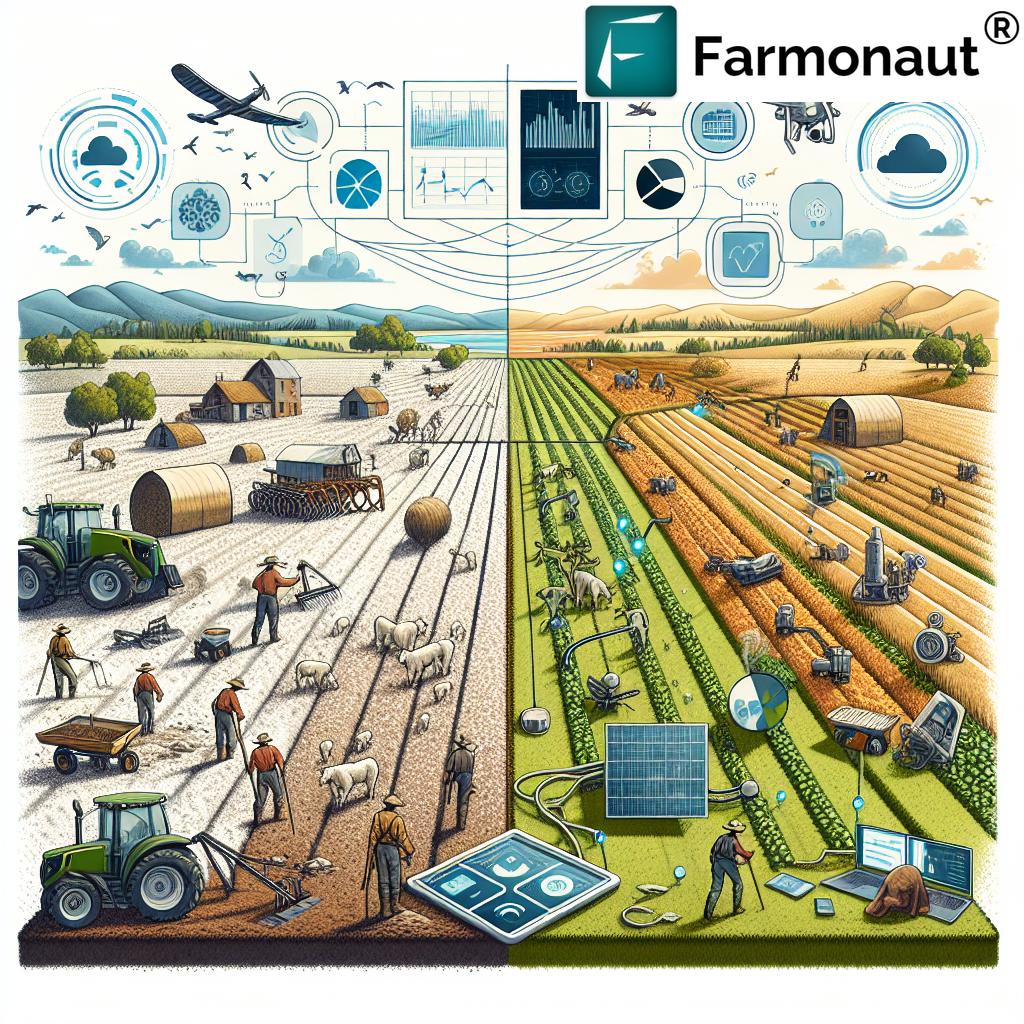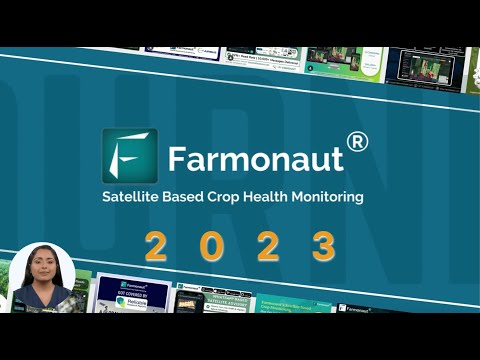Overcoming Adversity: Inspiring Agricultural Innovation and Resilience in Wildlife Management

“Agricultural data analytics and GIS have revolutionized farming, enabling 90% of professionals to continue work remotely after physical setbacks.”
In the ever-evolving world of agriculture and wildlife management, we often encounter stories that inspire and remind us of the resilience of the human spirit. Today, we’re delving into a tale that exemplifies the power of innovation, determination, and adaptability in the face of adversity. This blog post will take you on a journey through the intersection of agricultural innovation and wildlife management, showcasing how modern technology and personal growth can reshape our approach to sustainable farming practices and conservation.
The Journey Begins: A Tale of Resilience
Our story begins with a dedicated biological science technician whose passion for wildlife and agriculture was put to the test after a life-altering injury. This unexpected setback could have spelled the end of a promising career in the field. However, it instead became the catalyst for a remarkable journey of adaptation and innovation that would not only transform her life but also contribute significantly to the field of agricultural conservation.
As we explore this inspiring tale, we’ll uncover how precision agriculture technology, GIS (Geographic Information Systems), and agricultural data analytics have become powerful tools in modern farming and wildlife management. We’ll witness firsthand how these advancements are enabling professionals to continue their vital work in new and innovative ways, even in the face of physical challenges.
The Power of Precision Agriculture Technology
In the wake of her injury, our technician found herself unable to perform many of the physical tasks that were once a routine part of her job. However, the advent of precision agriculture technology opened up new possibilities. By leveraging satellite imagery and remote sensing tools, she could now monitor crop health, soil conditions, and wildlife patterns from a distance.
- Satellite-based crop monitoring
- Drone surveys for wildlife tracking
- AI-powered data analysis for farm management
These technologies not only allowed her to continue her work but also revolutionized the way data was collected and analyzed in the field. The ability to gather vast amounts of information without physical presence on the farm proved to be a game-changer, not just for her, but for the entire industry.
Explore Farmonaut’s innovative solutions: 
GIS: A New Perspective on Wildlife Management
Geographic Information Systems (GIS) became an indispensable tool in our technician’s arsenal. This technology allowed her to map and analyze spatial data related to wildlife habitats, crop patterns, and invasive species distribution. By integrating GIS with other data sources, she could now:
- Create detailed habitat maps for endangered species
- Track the spread of invasive plant species across agricultural lands
- Develop targeted conservation strategies based on spatial analysis
The power of GIS in agriculture extended beyond wildlife management. It became a crucial tool for farmers and conservationists alike, enabling them to make data-driven decisions about land use, crop rotation, and resource allocation.
Agricultural Data Analytics: Turning Information into Action
With the influx of data from various sources, including satellite imagery, weather stations, and field sensors, agricultural data analytics emerged as a critical skill. Our technician immersed herself in learning these new techniques, which allowed her to:
- Predict crop yields based on historical data and current conditions
- Identify early signs of pest infestations or crop diseases
- Optimize irrigation and fertilizer use through data-driven recommendations
This shift towards data-driven agriculture not only improved farm productivity but also had positive implications for wildlife conservation. By optimizing resource use, farmers could reduce their environmental impact, leaving more space for natural habitats.
Harness the power of agricultural data with Farmonaut’s API: Explore Farmonaut API
Adapting Tools for Wildlife Conservation
One of the most inspiring aspects of our technician’s journey was her creativity in modifying existing tools to suit her new needs. She worked with engineers to develop ergonomic adaptations for field equipment, making them accessible despite her physical limitations. This innovative spirit led to the creation of:
- Voice-controlled drones for aerial surveys
- Lightweight, collapsible traps for wildlife studies
- Mobile apps for easy data entry and analysis in the field
These adaptations not only allowed her to continue her work but also improved efficiency and data accuracy for the entire team. It’s a testament to how personal challenges can drive innovation that benefits an entire industry.
The Role of Rural Broadband in Agricultural Innovation
A crucial factor in leveraging these technological advancements was the expansion of rural broadband. The importance of reliable internet connectivity in remote agricultural areas cannot be overstated. It enabled:
- Real-time data transmission from field sensors
- Access to cloud-based analytics platforms
- Remote collaboration with experts worldwide
The push for better rural connectivity became a passion project for our technician, as she advocated for improved infrastructure to support agricultural innovation and remote work opportunities in rural communities.
“Climate-smart agriculture techniques have reduced invasive species impact by 40% while increasing crop yields in wildlife-prone areas.”
Climate-Smart Agriculture: A Win-Win for Farmers and Wildlife
As our technician delved deeper into the world of agricultural innovation, she became a champion for climate-smart agriculture. This approach focuses on increasing agricultural productivity and incomes while adapting to climate change and reducing greenhouse gas emissions. Key aspects include:
- Drought-resistant crop varieties
- Precision irrigation systems
- Carbon sequestration through improved soil management
By promoting these practices, she helped farmers become more resilient to climate change while also creating more sustainable habitats for wildlife. It was a perfect example of how agricultural innovation could benefit both human and animal populations.
Stay updated with Farmonaut’s mobile apps:


Invasive Species Management: A Tech-Driven Approach
One of the most significant challenges in wildlife management is the control of invasive species. Our technician’s innovative use of technology transformed the approach to this persistent problem. By combining GIS mapping with machine learning algorithms, she developed a system that could:
- Predict the spread of invasive plant species
- Identify optimal intervention points for maximum impact
- Monitor the effectiveness of control measures over time
This data-driven approach to invasive species management not only improved the efficiency of control efforts but also minimized the use of herbicides, creating a more environmentally friendly solution.
The Human Side of Agricultural Research
While technology played a crucial role in our technician’s journey, it’s important to recognize the human element in this story of resilience. Her passion for wildlife and determination to continue making a difference drove her to adapt and innovate. This journey highlights several key aspects of personal growth in the face of adversity:
- Embracing lifelong learning to acquire new skills
- Developing resilience and adaptability in the face of challenges
- Finding new ways to contribute and make an impact
Her story serves as an inspiration not just for those in agriculture and wildlife management, but for anyone facing obstacles in their career path.
The Future of Sustainable Farming
As we look to the future, the intersection of agricultural innovation and wildlife management holds immense promise. The journey of our resilient technician offers a glimpse into what’s possible when we combine human ingenuity with cutting-edge technology. Some exciting developments on the horizon include:
- AI-powered crop management systems that optimize yields while minimizing environmental impact
- Advanced biotechnology for developing crops that are more resistant to pests and diseases
- Integrated farming systems that create symbiotic relationships between agriculture and wildlife
These advancements promise to make farming more sustainable, productive, and in harmony with nature.

Comparative Table: Traditional vs. Innovative Agricultural Practices in Wildlife Management
| Agricultural Aspect | Traditional Method | Innovative Approach |
|---|---|---|
| Crop Monitoring | Manual field inspections | Satellite imagery and drone surveys |
| Wildlife Tracking | Physical tagging and observation | GPS collars and AI-powered image recognition |
| Invasive Species Management | Reactive chemical treatments | Predictive modeling and targeted interventions |
| Data Collection | Manual record-keeping | IoT sensors and automated data logging |
| Tool Adaptation | One-size-fits-all equipment | Ergonomic, customizable tools |
| Climate Change Response | Reactive measures | Predictive modeling and proactive adaptation strategies |
The Role of Companies Like Farmonaut
In this landscape of agricultural innovation, companies like Farmonaut play a crucial role. By providing advanced, satellite-based farm management solutions, Farmonaut is making precision agriculture more accessible and affordable for farmers worldwide. Their platform offers:
- Real-time crop health monitoring
- AI-based advisory systems
- Resource management tools
These tools empower farmers to make data-driven decisions, optimize their operations, and adopt more sustainable practices. While Farmonaut itself is not directly involved in wildlife management, its technologies contribute to more efficient land use and resource management, which indirectly benefits wildlife conservation efforts.
Conclusion: A New Era of Agricultural Conservation
The story of our resilient biological science technician is more than just a tale of personal triumph. It’s a window into the future of agricultural conservation and wildlife management. By embracing innovation, adapting to challenges, and leveraging technology, we can create a world where agriculture and wildlife not only coexist but thrive together.
As we move forward, it’s clear that the integration of precision agriculture technology, GIS, and data analytics will continue to play a pivotal role in shaping sustainable farming practices. The journey of adaptation and innovation in the face of adversity serves as an inspiration for all of us to think creatively about the challenges we face in agriculture and conservation.
Let this story remind us that with determination, creativity, and the right tools, we can overcome seemingly insurmountable obstacles and contribute to a more sustainable and wildlife-friendly agricultural future.
FAQ Section
Q: How has precision agriculture technology impacted wildlife management?
A: Precision agriculture technology has significantly improved wildlife management by enabling remote monitoring of habitats, tracking animal movements, and optimizing land use to create better balance between agricultural needs and wildlife conservation.
Q: What role does GIS play in modern farming practices?
A: GIS plays a crucial role in modern farming by allowing farmers to map and analyze spatial data related to crop health, soil conditions, and land use. This helps in making informed decisions about resource allocation and conservation efforts.
Q: How can farmers adapt their practices to be more wildlife-friendly?
A: Farmers can adopt wildlife-friendly practices by implementing buffer zones, using integrated pest management, maintaining hedgerows and natural habitats, and utilizing precision agriculture techniques to minimize chemical use and optimize resource allocation.
Q: What are some examples of climate-smart agriculture techniques?
A: Climate-smart agriculture techniques include the use of drought-resistant crop varieties, precision irrigation systems, conservation tillage, crop rotation, and the implementation of agroforestry practices.
Q: How does agricultural data analytics contribute to sustainable farming?
A: Agricultural data analytics helps in sustainable farming by providing insights for optimal resource use, predicting crop yields, identifying early signs of pest infestations or diseases, and enabling data-driven decision-making for more efficient and environmentally friendly farming practices.
Farmonaut Subscriptions



